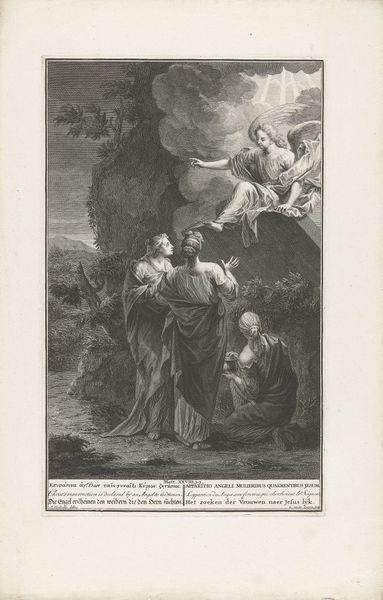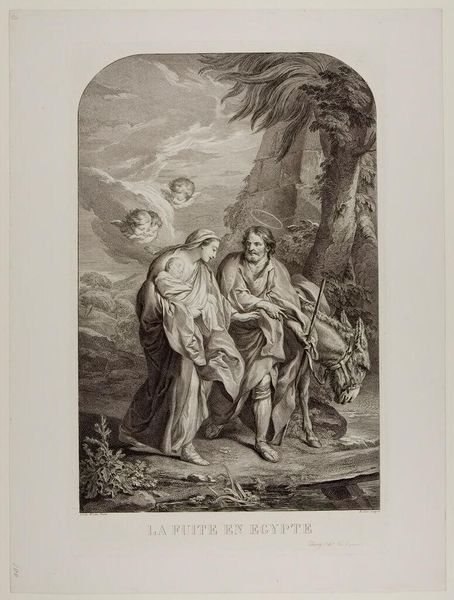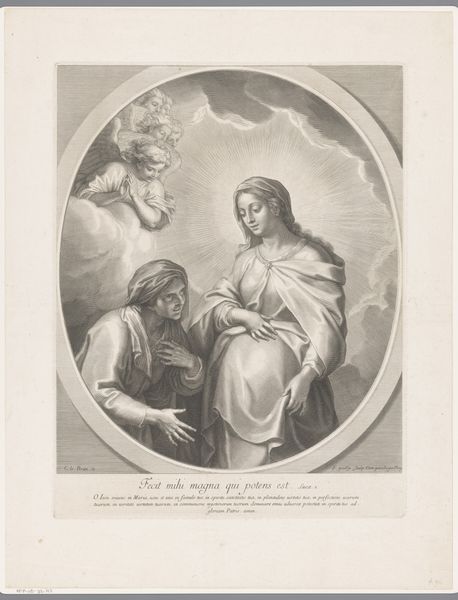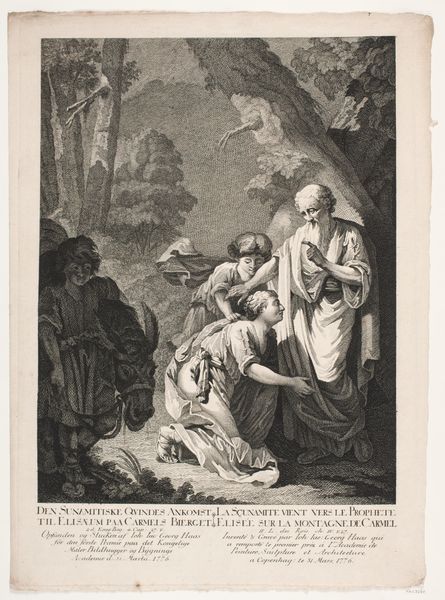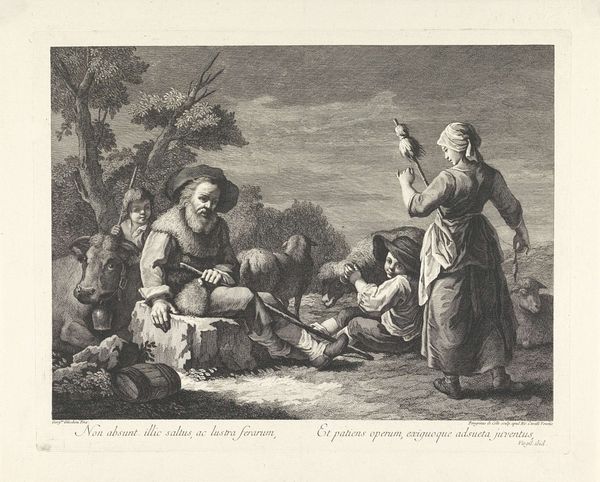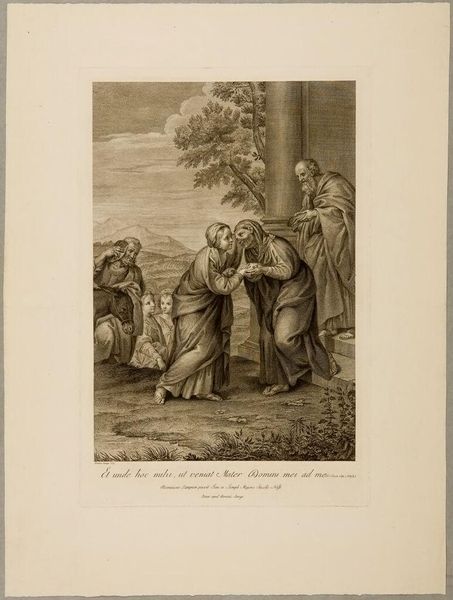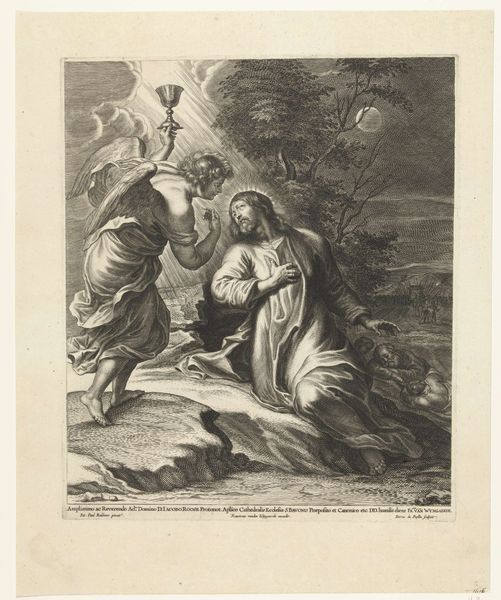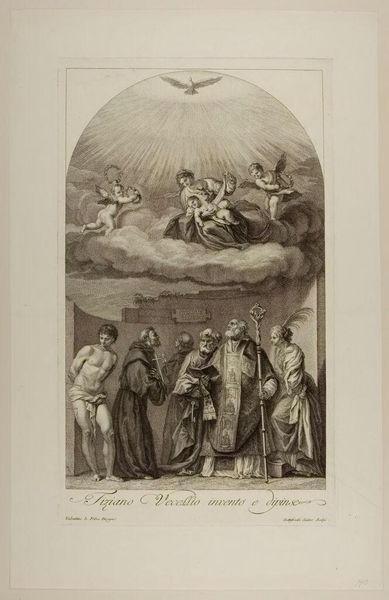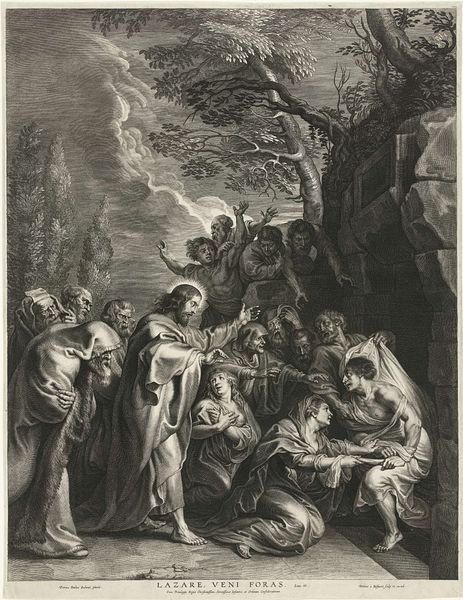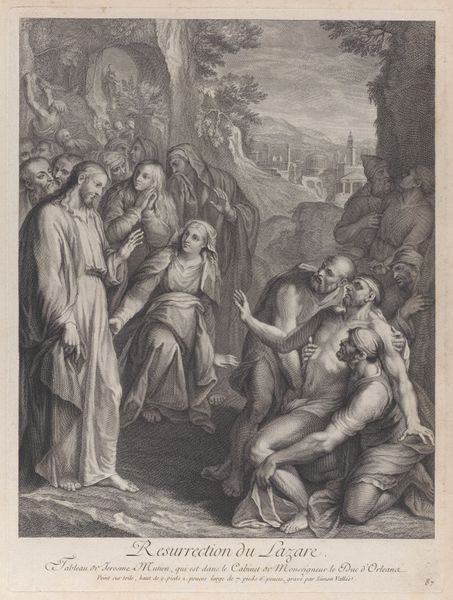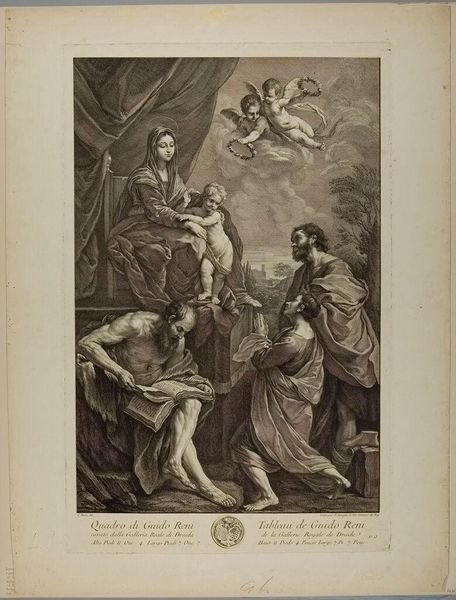
graphite, engraving
#
neoclacissism
#
allegory
#
symbol
#
old engraving style
#
graphite
#
history-painting
#
graphite
#
engraving
Dimensions: height 515 mm, width 410 mm
Copyright: Rijks Museum: Open Domain
Curator: This graphite engraving, titled "Allegory of the Peace Negotiations Begun in 1800", presents an idealistic vision from a tumultuous time. What's your initial read? Editor: It strikes me as remarkably aspirational. The subdued grey scale and neatly organized composition, encased in a circular frame, speak to a desire for order amidst chaos. Is it me, or does the presentation feel more like wishful thinking? Curator: Absolutely, the piece utilizes neoclassicism’s symbolic language. Consider the central figure bestowing an olive branch—an ancient symbol of peace—upon the kneeling figure. It suggests not only the promise but also the divine blessing of reconciliation. Note also the discarded weapons in the lower corner; a strong visual statement on ending conflict. Editor: A pointed one, especially given the historical context. These peace negotiations occurred during the Napoleonic Wars, a time of widespread upheaval and shifting power dynamics in Europe. The figure resembling Napoleon seems placed deliberately, perhaps to portray his pivotal role in these fragile proceedings. Curator: Precisely, the engraver positions him alongside a Christ-like figure, further reinforcing the idea of divine approval and perhaps legitimizing Napoleon’s ascent. These negotiations were loaded with ideological significance. How interesting to see them represented as figures of blessing. Editor: But it's also a heavily gendered scene. Peace, presented as a Grecian goddess figure bestowing a symbol on a subservient, kneeling supplicant—likely meant to symbolize France. What is that figure offering on bended knee, and how much agency does it really have in this alleged "peace"? Curator: The kneeling figure is definitely vulnerable, emphasizing the perceived benefits bestowed by peace, yet perhaps underscoring a cost—a surrender of sovereignty. Editor: This "peace," visualized through submission, speaks volumes. It’s a powerful reminder that seemingly neutral artistic choices can often reinforce existing power structures, framing history from a specific viewpoint. I do love how history and emotion is encoded here. Curator: It's a window into how the concept of peace was ideologically manipulated at the time, something to remember as we examine visual rhetoric around current negotiations too. Editor: Agreed. The peace we yearn for isn’t just the absence of conflict, it's a complex and politically-weighted arrangement, shaped by symbols and ideologies. I’ll carry that thought with me today.
Comments
No comments
Be the first to comment and join the conversation on the ultimate creative platform.
